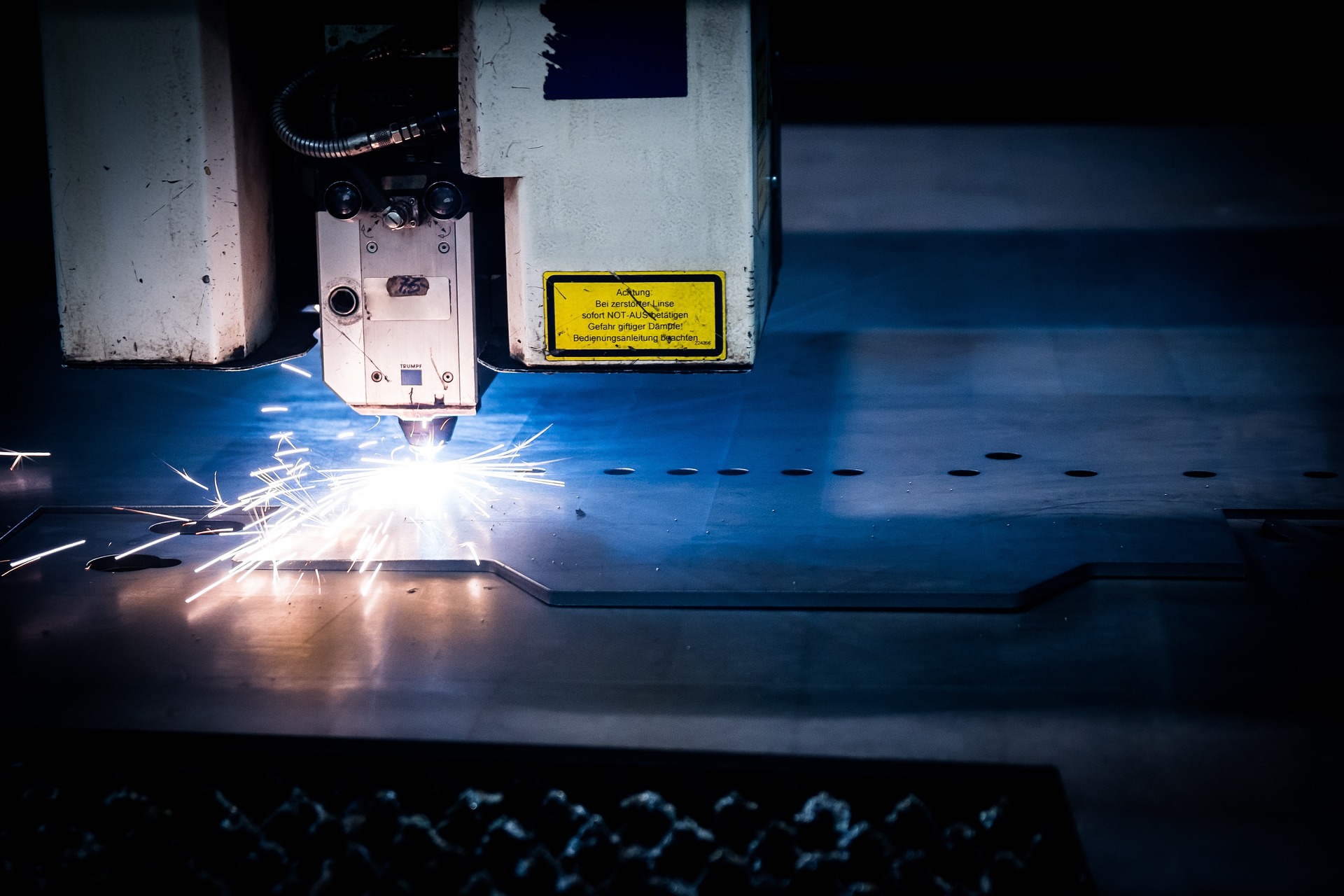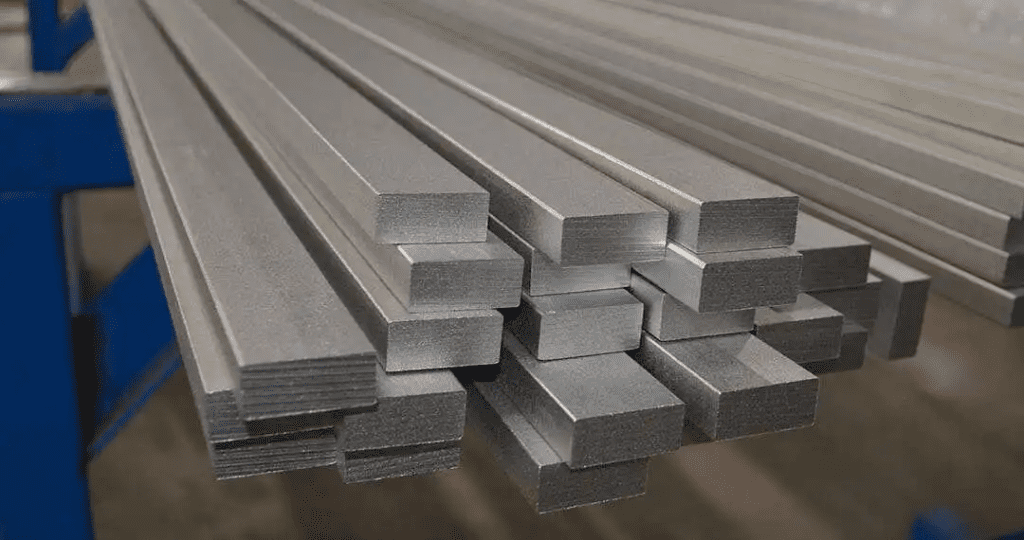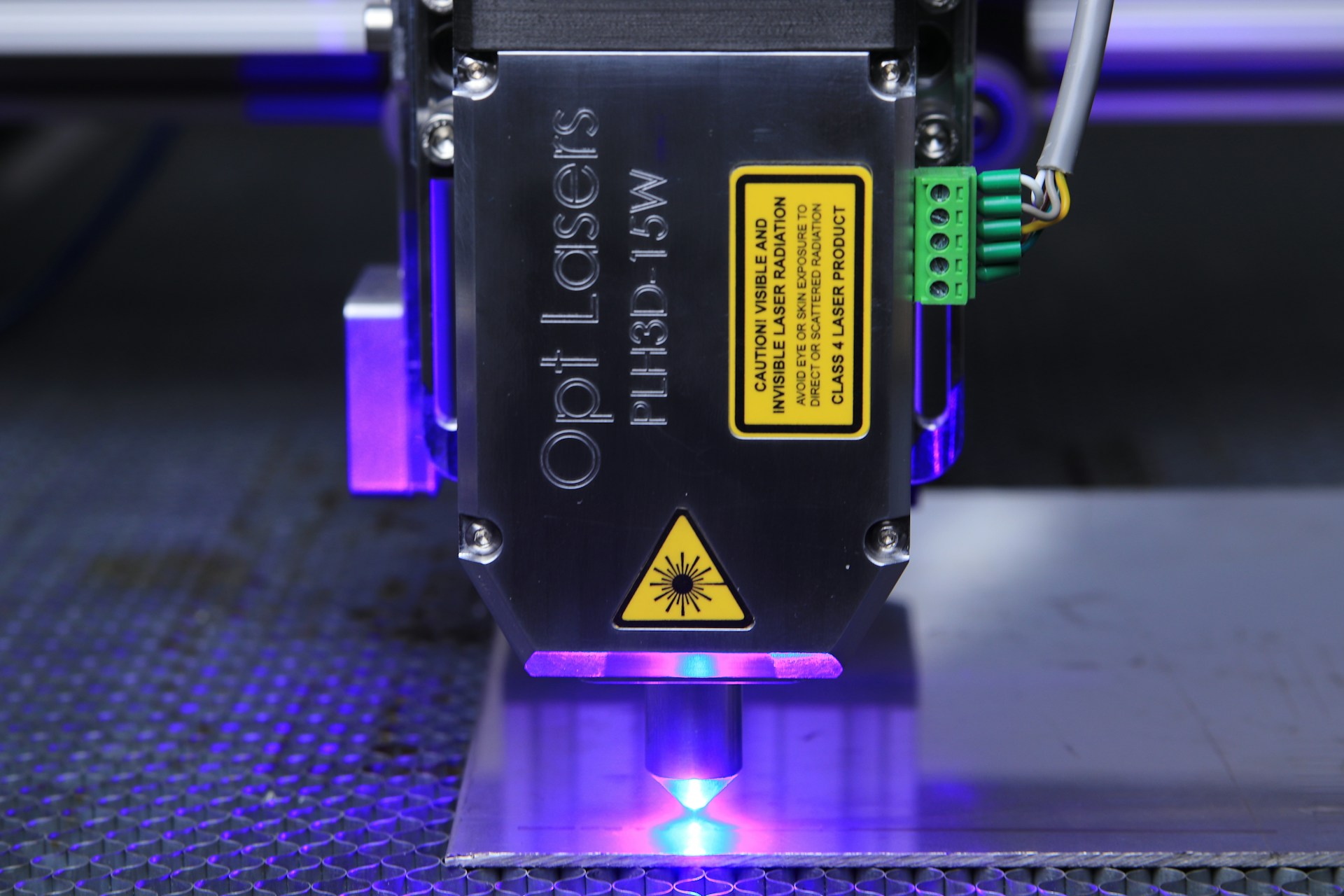Laser cutting, a technology once confined to science fiction, has revolutionized the way we shape metal, bringing unparalleled accuracy, speed, and versatility to the craft. Metal laser cutting is basically where a super powerful laser beam is used to cut through different metals with maximum precision. This process involves focusing the laser beam on the material, causing it to melt or vaporize.
This article aims to analyze the fascinating field of laser systems for metal-cutting activities, including its history, applications, and the advantages these laser-cutting services bring to the table.
History of Laser Cutting
The roots and history of laser cutting trace back to the mid-20th century when scientists began harnessing the power of lasers. The concept of laser cutting metal gained momentum in the 1960s with the development of the first high-powered lasers, and by the 1970s, industrial applications started to emerge.
Some of the highlighted landmark years in laser cutting history include the following:
- 1965: The Western Electric Engineering Research Center got into laser cutting tech for drilling in diamond dies, coupled with laser cutting using carbon dioxide. This move made laser cutting way more versatile.
- 1969: Fast forward to 1969, Boeing became the first company to go all-in on gas laser cutting for business. Their team drafted an entire document using a carbon dioxide laser to cut through titanium, hastelloy, and ceramic. This has often been described as a game-changer, leading to the birth of multi-beam laser cutting services.
- 1979: Prima Industrie in Italy brought a 3D laser cutting process to the table, blowing up the possibilities for laser metal cutting. Now, laser power is a big deal in many industries, especially in thin metal processing. Thin metal sheets are commonly used in automobiles, major appliances, truck bodies, airplane fuselages, etc.
By the 1980s, laser cutters began to find their way into metalworking shops. Since then, advancements in laser technology, coupled with the recent rise of computer-aided design (CAD) and computer numerical control (CNC), have transformed laser cutting services into a cornerstone of modern metal fabrication.
Laser Cutting and Metal

“Laser cutting machine, metal”
But what makes laser cutting so well-suited to metal? The answer lies in the nature of light itself. A laser beam, which is a concentrated stream of highly focused photons, possesses an energy density unmatched by traditional cutting methods. This concentrated power allows laser cutters to slice through even the most stubborn metals with immaculate precision and minimal heat distortion.
Unlike plasma or waterjet cutting, which can leave warped edges and require extensive post-processing, laser-cut metal emerges from the machine ready for immediate use.
|
Buy Certified High-Quality Metals for Industrial Solutions |
||
|
New Aluminum |
New Steel |
New Stainless Steel |
 |
 |
 |
| Reliable supply: Consistent, certified aluminum stock you can trust. High-quality material: Superior-grade aluminum for precision needs. Custom cuts: Accurate cuts down to thousandths of an inch. |
Durability and strength: Reliable for projects needing long-lasting, tough materials. Cost-effective: Quality steel that offers strength without breaking the bank. Custom cutting: Precise cuts tailored to exact needs with top-tier cutting tools. |
Sustainability: Highly eco-friendly as the most recyclable metal on earth. High durability: Resistant to corrosion and wear, ensuring long-lasting performance. Custom precision cuts: Tailored to your specifications with quick, accurate results. |
Types of Metals for Laser Cutting
The versatility of laser metal cutting extends beyond its precision. The following table provides a glimpse into the metals the laser’s fiery breath can tame.
| Metal Type | Laser Cut Description |
| Mild Steel | The preferred option for laser cutting, especially where exceptional strength is not required. |
| Aluminum | It’s lightweight, allowing for faster cuts. |
| Brass | The copper-zinc alloy can easily be laser-cut into musical instruments and other automotive parts. |
| Stainless Steel | Common in laser metal cutting due to its high nickel content, making it easy to cut. |
| Copper | It can be laser cut only using higher-powered lasers due to its low absorption and high reflectivity of infrared wavelengths (over 95%), which can damage the laser metal cutter. |
How Laser Cutting Works

“Close up laser cutting machine”
Laser metal cutting employs a powerful laser directed through optics and computer numerical control (CNC) to guide the laser beam or material. A motion control system typically follows a CNC for cutting onto the material. The process involves four key stages: idea actualization, beam generation, beam focusing, and beam movement.
Idea Actualization
The laser-cutting process kicks off with your idea. This is the first stage; without it, the subsequent stages will not suffice. Once you’ve drafted it in mind, you can use computer design tools to prepare the design and transmit the data to the laser.
Generating the Laser Beam
The laser beam is an intense column of light with a single wavelength or color. In a typical CO2 laser, this wavelength is in the infrared part of the light spectrum, making it invisible to the human eye. The beam is about 0.0125 inches in diameter and travels through the machine’s beam path. This focused laser beam passes through a hole with compressed assist gas, such as oxygen or nitrogen, just before hitting the plate.
Focusing the Laser Beam
The third stage involves focusing the beam on your metal sheet. A unique lens or curved mirror focuses the laser beam in the laser cutting head. This ensures that the shape of the focus spot and the energy density are consistent and centered. The heat density becomes excessively high by focusing the large beam into a single pinpoint.
Moving the Laser Beam
This final stage entails moving the beam to actualize your idea. The laser cutting head on the CNC laser cutter moves over the metal plate in the desired shape, effectively cutting it out.
A height control system maintains an accurate distance between the nozzle’s end and the metal sheet. This very distance is quite crucial as it determines the focal point’s position relative to the plate surface, impacting cut quality. Adjusting the focal point’s height can affect cut quality, whether just above the surface, at the surface, or just below it.
Benefits of Laser-Cut Metal
The advantages of laser metal cutting extend far beyond mere aesthetics. Here are just a few of the benefits that have made laser metal cutting the go-to choice for metalworkers:
- Precision: Laser cuts are razor-sharp and burr-free, eliminating the need for extensive post-processing. This remarkable precision is highly significant in sectors like medical devices, where maintaining exact tolerances is crucial.
- Repeatability: CNC technology ensures consistent results, even for large production runs.
- Speed: Laser cutters can slice through metal at breathtaking speeds, significantly reducing production times.
- Versatility: A single laser cutter can handle a diverse range of materials and thicknesses, from thin sheets to thick plates,
- Minimal heat distortion: Unlike other metal cutting methods, laser cutting generates minimal heat, preserving the integrity and properties of the metal.
Laser Safety and Precautions
While laser metal cutting presents numerous benefits, safety is paramount. Proper precautions must be taken to ensure the well-being of laser machine operators and the integrity of the equipment. Some of the crucial precautions include:
- Protective gear: Operators engaging in laser-cutting activities must be equipped with appropriate protective gear. Laser beams, even weakened reflections, can inflict irreversible eye damage. This includes but is not limited to efficient safety glasses designed to shield against laser radiation.
- Adequate ventilation: Proper ventilation is a non-negotiable component of laser cutting safety. Laser cutting involves the release of fumes and particles, which, if not adequately ventilated, can pose health risks.
- Equipment maintenance: Ensuring the integrity of the laser-cutting equipment is as vital as safeguarding the operators. Regular maintenance checks and inspections help identify and address potential issues before they escalate.
- Controlled access: Limiting access to laser cutting areas to trained and authorized personnel is another layer of safety. This control ensures that only individuals well-versed in properly handling laser equipment are in proximity, minimizing the risk of accidents or mishaps.
Applications of Laser Cut Metal

“Airplane on airport”
Laser-modified metal finds applications across various industries, from aerospace and medicine to jewelry. Its versatility makes it ideal for creating intricate prototypes, custom components, and decorative elements. The precision of laser cutting is particularly valuable in industries where tight tolerances are essential.
Here are some of the many industry applications of laser-processed metal:
Architectural Industry
Each panel of the towering skyscrapers is a laser-cut masterpiece. Laser cutting’s ability to handle large metal sheets and create complex geometric patterns makes it ideal for architectural cladding, sunscreens, and decorative elements.
Aviation Industry
The aerospace industry demands the utmost precision and lightweight materials, especially thin metals. Laser cutting answers the call by crafting perfect components for aircraft interiors, engine casings, and delicate wing structures.
Jewelry
From delicate pendants to statement necklaces, laser metal cutting brings the art of jewelry making to a whole new level. Precise cuts and the ability to work with precious metals like gold and silver make laser cutting a jeweler’s dream tool.
Medical Industry
The medical field benefits greatly from the precision and sterility of laser-manufactured metals. This is evident in the delicate surgical instruments and orthopedic implants; laser cutting ensures perfect fits and smooth surfaces, which are crucial for successful procedures and patient well-being.
Laser Cutting vs. Traditional Methods
When we pit laser cutting against traditional methods such as plasma or water jet cutting, a clear set of advantages emerges. Laser cutting, with its advanced technology, presents several distinctive benefits that set it apart from the more conventional approaches.
Finer Precision
Laser cutting takes the lead in precision. The focused laser beam can achieve intricate details with exceptional accuracy. This precision is a game-changer, especially in industries where the most minor deviation matters. Plasma cutting, on the other hand, resembles a fiery broadsword, leaving wider kerfs (cut widths) and rougher edges that often require secondary finishing. Waterjet cutting, while capable of intricate cuts, can struggle with tight corners and sharp angles.
Lower Heat-Affected Zones
Traditional methods of cutting metal, like plasma and waterjet, generate significant heat, potentially warping the metal and altering its properties. Laser cutting, however, operates with a cool touch, minimizing heat-affected zones and preserving the integrity of the material.
Versatility Across Materials
Laser cutting showcases its prowess in handling a diverse range of materials. From metals to non-metals, laser cutting can navigate through a broader spectrum, making it a versatile choice for various applications. Plasma cutting, while effective for thick metals, struggles with thin sheets and non-conductive materials. Waterjet cutting, though versatile, can be slower and less cost-effective for specific materials.
Speed and Efficiency
Time is money, and laser cutting understands this well. Its rapid cutting speeds often surpass traditional methods, making it ideal for high-volume production runs. While plasma cutting can be fast for thick metals, it slows down for intricate shapes. Waterjet cutting, though precise, can be a time-consuming process.
Ease of Powder Coating
As you may know, powder coating is more durable, sustainable, and aesthetically appealing than paint. Laser cut metals are the ideal materials for powder coating
Variations in Laser Cutting
As laser cutting technology continues to advance, it unfolds into distinct variations, each tailored to specific strengths and applications. Understanding these variations empowers manufacturers and metalwork enthusiasts to choose the perfect instrument for their metalworking.
CO2 Laser Cutting
CO2 laser metal cutting involves carbon dioxide as the laser medium. One of its core strengths lies in versatility, as it easily handles a wide range of materials, from thin sheet metal to thick ones and even non-metals. It’s the go-to choice for work with non-reflective materials like steel and mild steel. CO2 lasers are particularly effective for applications where a smooth finish is paramount.
Fiber Laser Cutting
Fiber laser cutting, on the other hand, employs fiber optics as the laser medium. It involves channeling its concentrated beam through hair-thin optical fibers, delivering unparalleled speed and efficiency. This variation is reliable, especially when dealing with reflective materials like aluminum and copper.
Fiber laser machines have become a preferred choice in industries requiring high-performance cutting of metals, making them ideal for the automotive and electronics industries.
Almost all fiber laser machines have the capability of cutting through a 13 millimeters (mm) thick metal. The high-powered fiber laser machines can cut up to 30mm thick aluminum.
YAG Lasers
While CO2 and fiber lasers may dominate the metalworking headlines, YAG is utilized for microscopic precision and delicate materials like thin metals and lower gauge materials, reflective materials, plastic materials, and certain composites
Bottom Line
It is without a doubt that laser-cutting technology stands as a beacon of precision and efficiency. Thanks to its precision, metal laser cutting excels at crafting parts with intricate details. From its humble beginnings to the diverse applications it serves today, laser-cut metal has become an indispensable tool in modern industries.
 Angle
Angle Cast Plate
Cast Plate Diamond Plate
Diamond Plate Flat Bar
Flat Bar Plate
Plate Round Bar
Round Bar Square Bar
Square Bar Square Tubing
Square Tubing Round Tubing
Round Tubing Angle
Angle Channel
Channel Diamond Plate
Diamond Plate I Beam
I Beam Round Bar
Round Bar Sheet
Sheet Square tubing
Square tubing Round Tubing
Round Tubing Rectangular Tubing
Rectangular Tubing Plate
Plate Rectangular Bar
Rectangular Bar Rectangular Tubing
Rectangular Tubing Round Bar
Round Bar Sheet
Sheet Square Bar
Square Bar Square Tubing
Square Tubing
